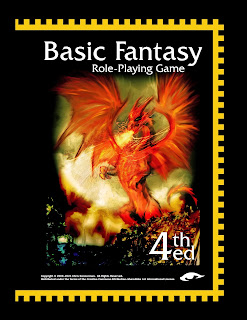One of the keys to a prosperous world conversion is the feeling, "It was always this way." The world always followed GURPS, and when the world was created - it was GURPS. Magic always worked this way; characters were always like this, history was made with these rules, and all the significant NPCs follow these rules and know nothing more.
There was no "time of troubles" or "the way things were before."
The original game books fight you every step of the way, especially the bestiaries and adventures.
This is why I use a bog-standard B/X bestiary (like the excellent Basic Fantasy) and do a rough conversion:
- HT = HD x5 or x10
- Attack Skill, Parry = 10 + (Attack Bonus / 2)
- Dodge = 6 to 10, estimate
- Damage = 1d3 or 1d6 per HD or by weapon (swing = +20%)
- Special Damage = 1d3 or 1d6 per HD (or 5 character points per HD for a power)
- DR = estimate based on armor, or (AC - No Armor AC)
Toss advantages and disadvantages on as needed. I recommend the lower multipliers for average creates and x10 for bosses, as 5x aligns it with the GURPS bestiaries. The elephant is a good example:
- HT = 50
- Attack skill = 15
- Dodge = 7
- Damage = 5d6 thrust, 7d6 swing
- Special Damage = none
- DR = 4
It matches the entry in GURPS Basic close enough. Those are good enough to play with. Goblin?
- HT = 5
- Attack skill = 10
- Dodge = 8
- Damage = 1d6 thrust, 1d6+2 swing
- Special Damage = none
- DR = 2
If you want special powers, like flame breath, give them special powers, tack damage on there based on HD, and be done with it. You don't need a full-blown character creation tool for these!
Again, it is close enough to the DF Monsters book, except HT, which is half - but hey, high fantasy, and this is a "minion" style monster - otherwise, use 10 HT. Skill is a little low, but this may be a villager - pump it by 2-4 points for a warrior.
Getting the numbers in a "good ballpark range" is all you care about. Tweak and adjust from there since no monster is alike.
Do enough of these and reference the Monsters and Basic Set books, and you'll get the hang of it quickly. Now you have a fantasy bestiary there, so you don't need to pick up the old one and hear the siren's call, "Just play me; it is easier..."
Sorry, I got my 4th Edition Basic Fantasy book, and we are free from all "it's not game X" feelings. Most special 5E monsters can be described as, "Oh, it's about the same size as a chimera, but it has ice-breath and mind-control powers." Find the chimera in Basic Fantasy, convert the numbers, tweak them to feel right, and tack on special powers.
You are done.
It is challenging to convert, but having a rule of thumb for converting monsters lets me quickly pull in a few favorites and get me in the ballpark should I need to use a part of an adventure for inspiration. This also helps the feeling that "the world was always this way" since the monsters are good to go.
If converting in a B/X module, remember that the number appearing should also be reduced. Old-school modules are infamous for putting 20-40 monsters in a room, and even a dozen skeletons could be lethal to a party of four.
Everything should be "reimagined" using the GURPS lens, and even significant NPCs should be flavored and given interesting specialties to make them unique for your game. If I were doing a Forgotten Realms conversion and trying to put together an Elminster, I would not make him a 1,000-point arch-mage, a superhero of magic. I would make him a 500-point or even a starting 250-point character and put him in his early career. Nobody gets put on a pedestal if he falls - so what? That is what happened in this reality, or maybe this world was part of one of his dreams (and he was here for a while).
No one gets put on a pedestal; every GMNPC is a starting hero.
If they fall, get corrupted to evil, or end up on the wrong side of something - that's the story. Your players may be playing alongside them or against them.
But I would make him a little different, like an alchemist or monster hunter. Give him a quirky, fun job; maybe he won't be so intolerable and god-modded. Elminster, the inexperienced magic hunter of monsters, sounds fun, and I could root for a guy like that. Give him a unique theme and set of skills, and let him play through adventures and get better at a new role in life.
Maybe he won't turn out like he did in other worlds and end up like a Pokémon trainer or mage who participates in gladiatorial monster fights. D&D can force you into a very annoying and stereotyped archetype at high levels, like the pious paladin, the wise old cranky wizard, or the Xerox Conan barbarian. What else is there to model yourself after?
Master alchemist Elminster? Monster hunter Elminster? Steampunk inventor Elminster? Magical postman Elminster? The Island of Doctor Elminster?
Those sound fun.
And they aren't so GMNPC I can't stand them.








